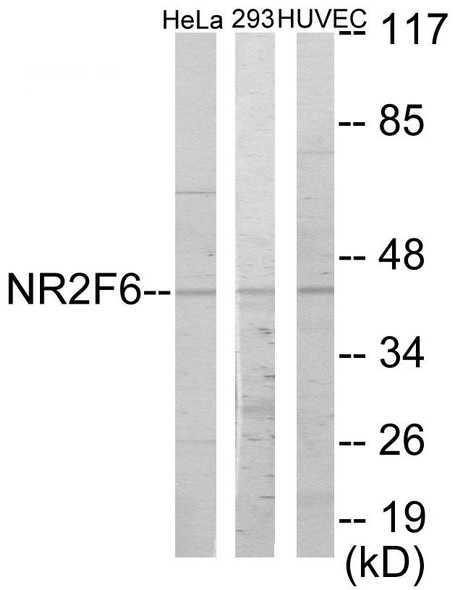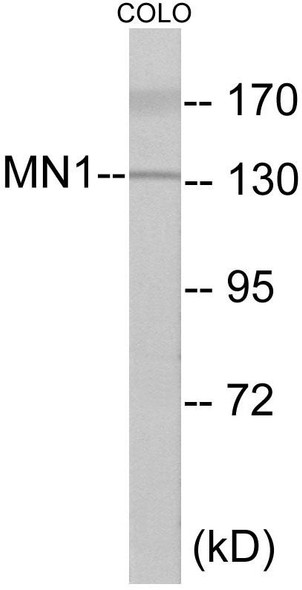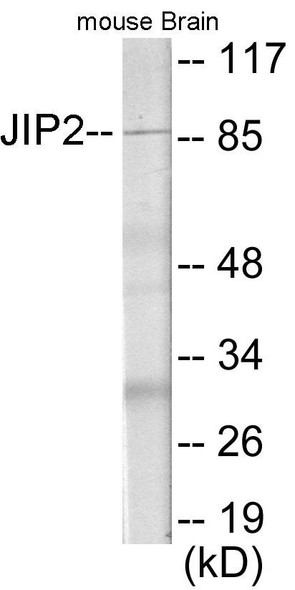Description
TRI18 Colorimetric Cell-Based ELISA
The Tri18 Colorimetric Cell-Based ELISA Kit from AssayGenie is a cutting-edge tool for researchers studying angiogenin and its role in angiogenesis and disease development. This innovative kit allows for the accurate and precise measurement of angiogenin levels in cell culture supernatants, providing researchers with valuable insights into the mechanisms underlying conditions such as cancer, cardiovascular diseases, and neurodegenerative disorders.
With its high sensitivity and specificity, the Tri18 Colorimetric Cell-Based ELISA Kit offers reliable and reproducible results, making it an indispensable asset for a wide range of research applications. Unlock the potential of your research with the Tri18 Colorimetric Cell-Based ELISA Kit from AssayGenie.
| Product Name: | TRI18 Colorimetric Cell-Based ELISA |
| Product Code: | CBCAB00929 |
| ELISA Type: | Cell-Based |
| Target: | TRI18 |
| Reactivity: | Human, Mouse, Rat |
| Dynamic Range: | > 5000 Cells |
| Detection Method: | Colorimetric 450 nmStorage/Stability:4°C/6 Months |
| Format: | 96-Well Microplate |
The TRI18 Colorimetric Cell-Based ELISA Kit is a convenient, lysate-free, high throughput and sensitive assay kit that can detect TRI18 protein expression profile in cells. The kit can be used for measuring the relative amounts of TRI18 in cultured cells as well as screening for the effects that various treatments, inhibitors (ie siRNA or chemicals), or activators have on TRI18.
Qualitative determination of TRI18 concentration is achieved by an indirect ELISA format. In essence, TRI18 is captured by TRI18-specific primary antibodies while the HRP-conjugated secondary antibodies bind the Fc region of the primary antibody. Through this binding, the HRP enzyme conjugated to the secondary antibody can catalyze a colorimetric reaction upon substrate addition. Due to the qualitative nature of the Cell-Based ELISA, multiple normalization methods are needed:
| 1. | A monoclonal antibody specific for human GAPDH is included to serve as an internal positive control in normalizing the target absorbance values. |
| 2. | Following the colorimetric measurement of HRP activity via substrate addition, the Crystal Violet whole-cell staining method may be used to determine cell density. After staining, the results can be analysed by normalizing the absorbance values to cell amounts, by which the plating difference can be adjusted. |
| Database Information: | Gene ID: 4281, UniProt ID: O15344, OMIM: 300000/300552, Unigene: Hs.27695 |
| Gene Symbol: | MID1 |
| Sub Type: | None |
| UniProt Protein Function: | MID1: Has E3 ubiquitin ligase activity towards IGBP1, promoting its monoubiquitination, which results in deprotection of the catalytic subunit of protein phosphatase PP2A, and its subsequent degradation by polyubiquitination. Defects in MID1 are the cause of Opitz GBBB syndrome 1 (OGS1). A congenital midline malformation syndrome characterized by hypertelorism, genital-urinary defects such as hypospadias in males and splayed labia in females, lip-palate- laryngotracheal clefts, imperforate anus, developmental delay and congenital heart defects. MID1 mutations produce proteins with a decreased affinity for microtubules. Belongs to the TRIM/RBCC family. 2 isoforms of the human protein are produced by alternative splicing. |
| UniProt Protein Details: | Protein type:Ligase; EC 6.3.2.-; Cytoskeletal; Ubiquitin conjugating system; EC 6.3.2.19; Ubiquitin ligase Chromosomal Location of Human Ortholog: Xp22 Cellular Component: microtubule; microtubule associated complex; cytoplasmic microtubule; spindle; cytosol Molecular Function:protein homodimerization activity; zinc ion binding; protein heterodimerization activity; microtubule binding; ubiquitin protein ligase binding; phosphoprotein binding; ligase activity Biological Process: metabolic process; negative regulation of microtubule depolymerization; cytokine and chemokine mediated signaling pathway; microtubule cytoskeleton organization and biogenesis; pattern specification process; positive regulation of stress-activated MAPK cascade Disease: Tracheoesophageal Fistula With Or Without Esophageal Atresia; Opitz Gbbb Syndrome, X-linked |
| NCBI Summary: | The protein encoded by this gene is a member of the tripartite motif (TRIM) family, also known as the 'RING-B box-coiled coil' (RBCC) subgroup of RING finger proteins. The TRIM motif includes three zinc-binding domains, a RING, a B-box type 1 and a B-box type 2, and a coiled-coil region. This protein forms homodimers which associate with microtubules in the cytoplasm. The protein is likely involved in the formation of multiprotein structures acting as anchor points to microtubules. Mutations in this gene have been associated with the X-linked form of Opitz syndrome, which is characterized by midline abnormalities such as cleft lip, laryngeal cleft, heart defects, hypospadias, and agenesis of the corpus callosum. This gene was also the first example of a gene subject to X inactivation in human while escaping it in mouse. Multiple different transcript variants are generated by alternate splicing; however, the full-length nature of some of the variants has not been determined. [provided by RefSeq, Jul 2010] |
| UniProt Code: | O15344 |
| NCBI GenInfo Identifier: | 22653810 |
| NCBI Gene ID: | 4281 |
| NCBI Accession: | O15344.1 |
| UniProt Secondary Accession: | O15344,O75361, Q9BZX5, B2RCG2, |
| UniProt Related Accession: | O15344 |
| Molecular Weight: | Calculated MW: 62kDa/75kDaObserved MW: 75-85kDa |
| NCBI Full Name: | E3 ubiquitin-protein ligase Midline-1 |
| NCBI Synonym Full Names: | midline 1 |
| NCBI Official Symbol: | MID1 |
| NCBI Official Synonym Symbols: | OS; FXY; OSX; OGS1; XPRF; BBBG1; GBBB1; MIDIN; RNF59; ZNFXY; TRIM18 |
| NCBI Protein Information: | E3 ubiquitin-protein ligase Midline-1; Opitz/BBB syndrome; RING finger protein 59; RING finger protein Midline-1; midline 1 RING finger protein; tripartite motif protein TRIM18; putative transcription factor XPRF; tripartite motif-containing protein 18; zinc finger on X and Y, mouse, homolog of |
| UniProt Protein Name: | E3 ubiquitin-protein ligase Midline-1 |
| UniProt Synonym Protein Names: | Midin; Putative transcription factor XPRF; RING finger protein 59; RING finger protein Midline-1; Tripartite motif-containing protein 18 |
| Protein Family: | Mid1-interacting protein |
| UniProt Gene Name: | MID1 |
| UniProt Entry Name: | TRI18_HUMAN |
| Component | Quantity |
| 96-Well Cell Culture Clear-Bottom Microplate | 2 plates |
| 10X TBS | 24 mL |
| Quenching Buffer | 24 mL |
| Blocking Buffer | 50 mL |
| 15X Wash Buffer | 50 mL |
| Primary Antibody Diluent | 12 mL |
| 100x Anti-Phospho Target Antibody | 60 µL |
| 100x Anti-Target Antibody | 60 µL |
| Anti-GAPDH Antibody | 60 µL |
| HRP-Conjugated Anti-Rabbit IgG Antibody | 12 mL |
| HRP-Conjugated Anti-Mouse IgG Antibody | 12 mL |
| SDS Solution | 12 mL |
| Stop Solution | 24 mL |
| Ready-to-Use Substrate | 12 mL |
| Crystal Violet Solution | 12 mL |
| Adhesive Plate Seals | 2 seals |
The following materials and/or equipment are NOT provided in this kit but are necessary to successfully conduct the experiment:
- Microplate reader able to measure absorbance at 450 nm and/or 595 nm for Crystal Violet Cell Staining (Optional)
- Micropipettes with capability of measuring volumes ranging from 1 µL to 1 ml
- 37% formaldehyde (Sigma Cat# F-8775) or formaldehyde from other sources
- Squirt bottle, manifold dispenser, multichannel pipette reservoir or automated microplate washer
- Graph paper or computer software capable of generating or displaying logarithmic functions
- Absorbent papers or vacuum aspirator
- Test tubes or microfuge tubes capable of storing ≥1 ml
- Poly-L-Lysine (Sigma Cat# P4832 for suspension cells)
- Orbital shaker (optional)
- Deionized or sterile water
*Note: Protocols are specific to each batch/lot. For the correct instructions please follow the protocol included in your kit.
| Step | Procedure |
| 1. | Seed 200 µL of 20,000 adherent cells in culture medium in each well of a 96-well plate. The plates included in the kit are sterile and treated for cell culture. For suspension cells and loosely attached cells, coat the plates with 100 µL of 10 µg/ml Poly-L-Lysine (not included) to each well of a 96-well plate for 30 minutes at 37°C prior to adding cells. |
| 2. | Incubate the cells for overnight at 37°C, 5% CO2. |
| 3. | Treat the cells as desired. |
| 4. | Remove the cell culture medium and rinse with 200 µL of 1x TBS, twice. |
| 5. | Fix the cells by incubating with 100 µL of Fixing Solution for 20 minutes at room temperature. The 4% formaldehyde is used for adherent cells and 8% formaldehyde is used for suspension cells and loosely attached cells. |
| 6. | Remove the Fixing Solution and wash the plate 3 times with 200 µL 1x Wash Buffer for five minutes each time with gentle shaking on the orbital shaker. The plate can be stored at 4°C for a week. |
| 7. | Add 100 µL of Quenching Buffer and incubate for 20 minutes at room temperature. |
| 8. | Wash the plate 3 times with 1x Wash Buffer for 5 minutes each time. |
| 9. | Add 200 µL of Blocking Buffer and incubate for 1 hour at room temperature. |
| 10. | Wash 3 times with 200 µL of 1x Wash Buffer for 5 minutes each time. |
| 11. | Add 50 µL of 1x primary antibodies (Anti-TRI18 Antibody and/or Anti-GAPDH Antibody) to the corresponding wells, cover with Parafilm and incubate for 16 hours (overnight) at 4°C. If the target expression is known to be high, incubate for 2 hours at room temperature. |
| 12. | Wash 3 times with 200 µL of 1x Wash Buffer for 5 minutes each time. |
| 13. | Add 50 µL of 1x secondary antibodies (HRP-Conjugated AntiRabbit IgG Antibody or HRP-Conjugated Anti-Mouse IgG Antibody) to corresponding wells and incubate for 1.5 hours at room temperature. |
| 14. | Wash 3 times with 200 µL of 1x Wash Buffer for 5 minutes each time. |
| 15. | Add 50 µL of Ready-to-Use Substrate to each well and incubate for 30 minutes at room temperature in the dark. |
| 16. | Add 50 µL of Stop Solution to each well and read OD at 450 nm immediately using the microplate reader. |
(Additional Crystal Violet staining may be performed if desired – details of this may be found in the kit technical manual.)






